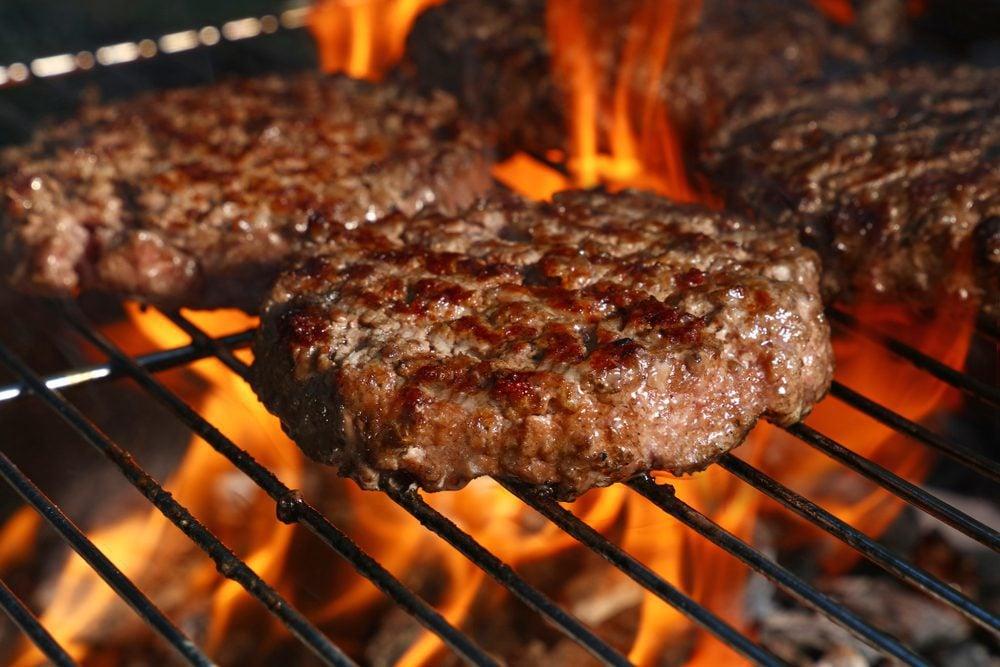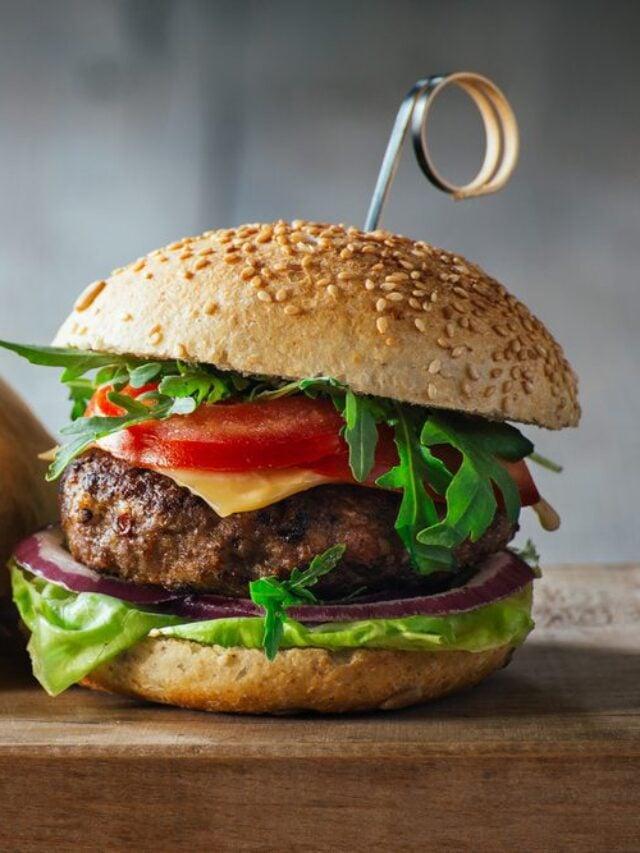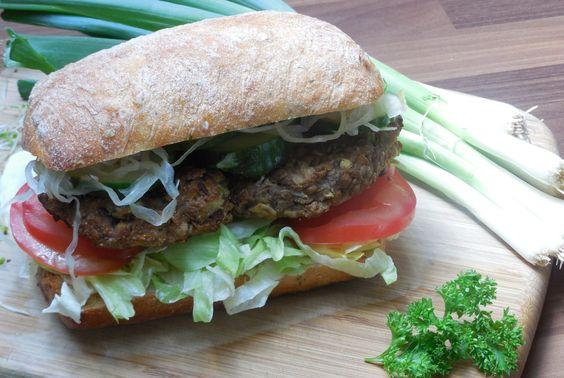Grilling a mouthwatering burger is an art form that requires just the right balance of heat, cooking time, and personal preferences. Whether you’re a seasoned grill master or just getting started, following a burger grill time chart can be the key to cooking up juicy, flavorful patties every time. In this comprehensive guide, we’ll explore essential tips and insights into the art of grilling burgers, from temperature controls to optimal cooking times and even how to dress your burger for maximum flavor. Get ready to become a burger grilling expert and impress your hungry guests!

Types of Burgers
Beef Burgers
Beef burgers are the undisputed stars of the grilling world. Made with ground beef that has a fat content of around 15-20%, they guarantee a juicy patty with a delicious seared exterior. You can use different cuts of beef, such as sirloin or chuck, or even a blend of cuts for added flavor. To grill beef burgers to perfection, form patties with a slightly indented center and cook over medium-high heat for 3-5 minutes per side or until they reach your desired level of doneness.
Chicken Burgers
For a leaner alternative, chicken burgers offer a different taste and texture. Typically made with ground chicken breast, you can also use ground chicken thigh for a juicier patty. Grilling chicken burgers requires a bit more attention to avoid overcooking and drying out. Cook them over medium heat for 4-6 minutes per side or until the internal temperature reaches 165°F.
Turkey Burgers
If you’re looking for a lean option, turkey burgers fit the bill. They can be made with ground turkey breast or a mixture of breast and thigh meat. Due to their lower fat content, it’s important to avoid overcooking. Cook turkey burgers over medium heat for 4-6 minutes per side for a perfectly cooked and juicy patty. Alternatively, you can add moisture with ingredients like onions, zucchini, or applesauce.
Bison Burgers
For those seeking a leaner yet flavorful alternative to beef, bison burgers are an excellent choice. Bison meat is lower in fat and has a slightly gamey flavor. To grill bison burgers, use a gentle touch to prevent overcooking. Keep the grill at medium heat and cook for 3-5 minutes per side or until the internal temperature reaches 160°F. The result will be a tender and juicy patty.
Veggie Burgers
Veggie burgers come in various styles and flavors, made from ingredients like soy, black beans, lentils, or vegetables. Grilling veggie burgers can be a bit tricky as they can be delicate and require extra care. To ensure a well-cooked veggie patty, use a well-oiled grill or grilling pan and cook over medium heat for 4-6 minutes per side.
Remember to adjust cooking times based on individual preferences and grill performance.

Burger Preparation
Seasoning
To prepare your burger patties, start by combining your choice of ground meat with seasonings. A general rule of thumb is to use 1 teaspoon of salt, 1/2 teaspoon of pepper, and 1/2 teaspoon of onion powder for every pound of meat. Feel free to add other seasonings like Worcestershire sauce or ketchup for a more complex flavor. Here’s a simple seasoning recipe:
- 1 pound ground beef
- 1 teaspoon salt
- 1/2 teaspoon pepper
- 1/2 teaspoon onion powder
- Optional: Worcestershire sauce or ketchup
Patty Thickness
When forming the patties, take a portion of the seasoned meat and shape it into a ball. Press the ball down to create a flat, round patty. Aim for a patty that is around 1 inch thick. Patties that are too thin may dry out quickly, while overly thick patties may not cook evenly. The USDA recommends a safe internal temperature of 160°F for ground beef.
You can also adjust the fat content of your burger patties. Higher fat content results in a juicier burger, while lower fat content is leaner and healthier.
Adding Cheese
If you’re a fan of cheeseburgers, add a slice of your favorite cheese after flipping the patties, allowing it to melt as the burger finishes cooking. Popular cheese options include cheddar, Swiss, pepper jack, or blue cheese. For a surprise burst of flavor, you can also stuff the patty with cheese before grilling.
In summary, a great burger patty involves proper seasoning, patty thickness, and optional cheese addition. Keep these tips in mind as you grill your burgers to ensure a delicious and satisfying meal.

How to Grill Burgers
Grill Types
There are two main types of grills you can use for grilling burgers: charcoal and gas grills. Charcoal grills offer a distinct, smoky flavor, while gas grills provide a more consistent heat, making it easier to control the cooking process.
- Charcoal Grill: Provides a smoky flavor and requires charcoal briquettes as fuel.
- Gas Grill: Offers consistency in heat and uses propane or natural gas as fuel.
Grill Temperatures
Grilling temperatures for burgers depend on your desired level of doneness. The USDA recommends a minimum internal temperature of 160°F for beef burgers to ensure food safety. Here’s a quick temperature guide for different levels of doneness:

Grilling Process
Follow these steps for grilling delicious burgers on either charcoal or gas grills:
-
Preparation: Preheat the grill to a high temperature and clean the grill grates with a brush to remove any residue.
-
Shaping Patties: Shape your burger patties to a thickness of about ¾-inch (1.9 cm). Create a small indentation in the center to help the patty maintain its shape during cooking.
-
Seasoning: Season the patty with salt and pepper or any other seasoning of your choice.
-
Grilling: Place the patties on the grill, giving them enough space for proper cooking. Use a meat thermometer to check the internal temperature and determine the cooking time:
- Rare: 4-5 minutes per side
- Medium-Rare: 5-6 minutes per side
- Medium: 6-7 minutes per side
- Medium-Well: 7-8 minutes per side
- Well-Done: 8-9 minutes per side
For veggie burgers, cooking times may be slightly shorter, so keep an eye on their appearance and firmness.
-
Toasting Buns: During the last minute of cooking, place the hamburger buns on the grill to lightly toast them.
Once everything is cooked to your desired level, assemble your burgers with your favorite toppings and enjoy the delicious result.
Doneness and Internal Temperature
When grilling burgers, it’s important to monitor their internal temperature to ensure the desired doneness. Use a meat thermometer to measure the temperature at the center of the burger. The USDA recommends specific internal temperatures for various levels of doneness:
- Rare Burgers: Cooked on the outside while still being mostly red and cool in the center. Ideal internal temperature: 120-125°F (49-52°C).
- Medium-Rare Burgers: Slightly more cooked than rare, with a warm pink center. Ideal internal temperature: 130-135°F (54-57°C).
- Medium Burgers: Cooked further than medium-rare, with a pink center. Ideal internal temperature: 140-145°F (60-63°C).
- Medium-Well Burgers: Only a hint of pink in the center. Ideal internal temperature: 150-155°F (66-68°C).
- Well-Done Burgers: No pink in the center. Ideal internal temperature: 160°F (71°C) or higher.
Adding Toppings and Serving
Condiments
To enhance the flavor of your fresh beef burgers, consider adding various condiments. Some popular options include ketchup, mustard, mayonnaise, and barbecue sauce. Feel free to experiment with different combinations and get creative.
Vegetables
Adding vegetables to your grilled burgers not only adds flavor but also nutrients. Classic toppings like lettuce, tomato slices, pickles, and red onion are always a hit. For added texture, try grilling some vegetables like bell peppers or mushrooms before placing them on the burgers.
Cheeses
Adding cheese can dramatically alter the taste of your burgers. Some popular options are cheddar, Swiss, pepper jack, or blue cheese. Experiment with different cheeses to find your favorite combination.
Always follow the recommended grilling times to achieve your desired level of doneness. To boost the flavor, season your burger patties with kosher salt and ensure they have well-formed grill marks. While this guide focuses on beef burgers, you can apply similar principles to chicken meat as well. Feel free to experiment with various combinations of toppings, seasonings, and grilling methods to create the perfect burger tailored to your preferences.
Safety and Recommendations
When grilling burgers, prioritizing safety and following appropriate guidelines is crucial. Different meats have varying cooking times and temperatures, and the ideal grilling time for a burger depends on its size and components.
Choose the right type of meat for your burgers, considering the fat content. Higher fat content causes more flare-ups and may require additional cooking time to reach a proper internal temperature. For a healthier alternative, consider using a meat substitute or adding quinoa to your burger mixture for added nutritional benefits.
For even cooking, ensure that your burgers have a consistent diameter throughout. Creating a small dimple in the center of the patty prevents it from puffing up during the grilling process, allowing for more even cooking and achieving the desired internal temperature.
Using an instant-read thermometer is essential for checking the doneness of your burgers. Insert the thermometer into the thickest part of the patty for an accurate reading. Here are some general guidelines for cooking times based on your preferred level of doneness:

Remember that these are general guidelines, and actual cooking times may vary depending on the thickness of your burger and your specific grill. To ensure food safety, ground beef should be cooked to a minimum internal temperature of 160°F.
By following these safety tips and recommendations, you can confidently grill delicious and perfectly cooked burgers for your next cookout.
Remember, grilling burgers is not only about the end result but also about the enjoyment of the process. Gather your friends and family, fire up the grill, and create unforgettable dining experiences with your expert grilling skills!



